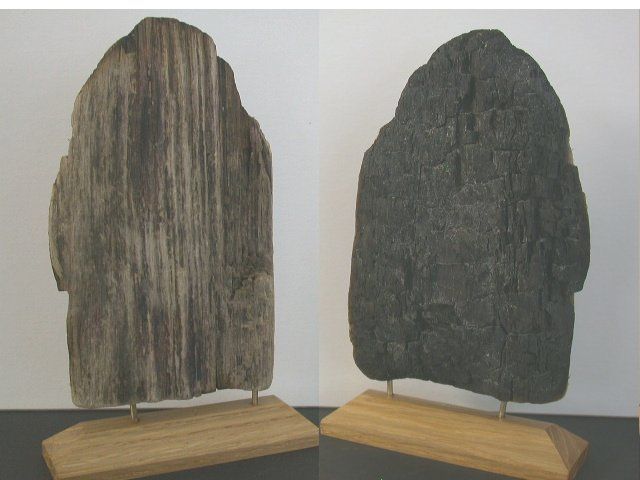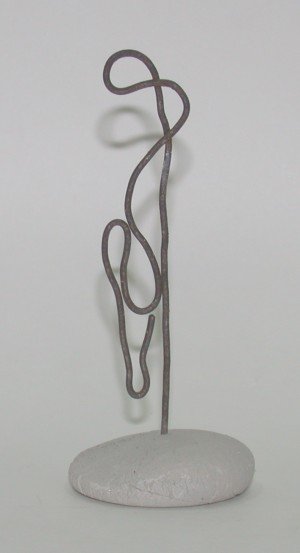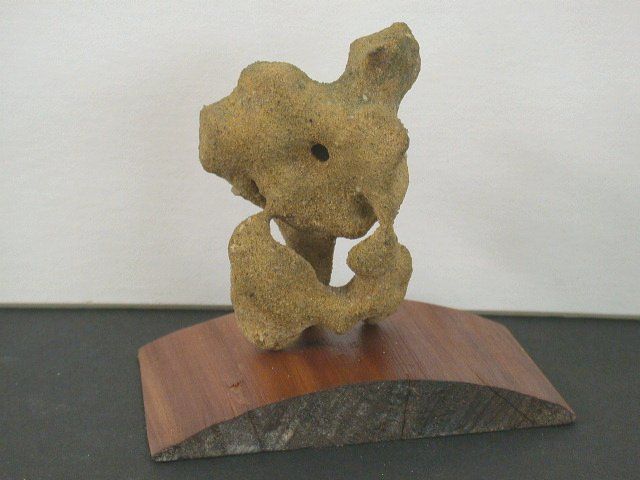What are Yulem Objects?
It all started when I was in art school. While I loved art I hated the pretensions that always seemed to come with it. Of course I wasn’t the first. Marcel Duchamp expressed a similar point with his “ready-mades” as did several of the Dadaists. For me the was result was “yulem objects.”
What are Yulem Objects?
We often remark on the shape, color, or texture of everyday objects. Some of these objects are so special that they deserve to be shared with others. These are Yulem Objects. They exist everywhere and only require you recognize them so there’s little room for pretension.
The word yulem is derived from ylem, which is the first substance from which the elements were formed (Thank you Gamow). Most generally yulem is the quality of having been formed naturally into an object of unique interest. "Naturally" is included to exclude objects consciously made by humans.
With yulem the emphasis is on unique interest, not uniqueness
Many objects are unique (as in every rose is unique) but not all are of unique interest. Clearly this is a subjective consideration but therein is the importance of a yulem object. We have three conditions to achieve yulem.
- Must be uniquely interesting - Any natural object might be uniquely interesting to a single individual and is of minimal value. Another object might be considered uniquely interesting by a very large number of people. The value of such an object could be priceless.
- Must be naturally formed - These objects are typically formed by actions of nature or accidentally (maybe inadvertently) by humans. Yulem objects are not consciously made by humans as are arts and crafts.
- Must be discoverable - Since yulem is about seeing the object must be visible and accessible. They are objects available to anyone who has the sensitivity to recognize them. Once discovered there is then a shift in context, usually by removing it from where it was discovered to a place of display for others to see.
Understandably, yulem objects are an acquired taste as they exist well outside the boundaries of what most deem to be art. Many uniquely interesting objects can be found and some even possess sufficient quality to be considered “art” but like most paintings, sculptures, prints, and ceramics they fail to achieve that higher aesthetic classification. Nevertheless they are worth collecting and sharing with others. Here are just a few examples:

The bi-polar board was found in the tide line at a beach. At first I saw the the texture of the sea weathered side and picked it up. To my delight the charred side was revealed making is a bit special.

The fetal wire was picked up among the rubble somewhere that I have forgotten. But it was the special collection of curves that happened to occur in the piece of steel wire that just seemed “to work” for me.

We don’t have many rocks where I grew up in Florida. (Some places do have a lot of limestone.) But when you dig into our mostly sandy dirt you can find what is called “hardpan.” This is a piece of hardpan found when I was digging a hole.
Of course everyone knows that we get hurricanes in Florida. Palm trees survive these bad storms mostly intact because their fronds (leaves) will bend forward and fold with the wind. They look exactly like this piece of wire we call the “Hurricane Palm.”
If you have some examples of a yulem object let us know and include the tag “yulem”!
Thank You @yulem I have seen many such objects in my years, and recognised and appreciated that inhereant art personality within them but have never even considered that there was a collective noun description for what I just considered to be a phenomena.
Thank you for sharing that. By adding to my vocabulary, you also expand my universe. Again, Thank you.
I realise that by definition, an object, may not include a landscape, but what do you feel about that yulem? The reason that I ask is that I am quite a fan of Gaia's Art. It can be found in a small pebble, or can even be a mountain in its entirety.
For this reason, I have linked 3 photos from my collection at The Dimensional Gate in Puno, Peru.
I would love it if you had the time to look at, and share your perspective on the shared qualities of yulems and landscapes :)
Although The Gateway itself is believed to be man made, the items I will be drawing your attention to are believed to be natural formations.
In This picture we can see a figure laying on their back.
Just a little further to the right, and up the incline, another figure lays in the same position, only this one is in a much further state of erosion.
Then, if you were to turn 180, a short 5 min walk brings you to this buddha Here's a closeup in case you don't see it straight up.
To see wonder in life, you must be willing to to See the unexpected :)
By definition a yulem object is an object formed by natural processes which possesses a set of intrinsic aesthetic characteristics that transform it into an object of unique interest.
Many things are formed naturally and satisfy that part of the definition. The more interesting part of the definition is "... transform it into an object of unique interest".
This is typically a result of consensus, but not always. Like any art object, some folks love it others hate it. The fun part is the discussion an object can generate.
Concerning large, natural formations, they could be considered a yulem object but often fall into other categories. Because we humans tend to anthropomorphize so readily merely human-like objects often fall short of the last part of the definition. Photography is a great tool for capturing and sharing the aesthetics of such larger objects but then the aesthetics of photography also come into play. Often an object or artifact is more "valuable" for what it is than whether or not it might be a yulem object. It's hard for me to tell from the photos but is the Buddha natural or man-made? Either way it's a neat object. Did you discover it?
The crucial point is learning to see what's right in front (or behind) us; to step outside popular notions and trends.
Thanks for taking the time to acknowledge, and reply to my comment. I resonate well with your perspective. I now better understand your explanation in so far as requiring uniqueness of interest. Thank you.
I was fortunate enough to be travelling on this occasion with a Shaman who was very familiar with this area and it was he who showed me the Buddha.
You're welcome.
Wow, really nice idea of yulems :) The board is amazing
Thank you,
It is an acquired taste and not all appreciate such aesthetics.
Seeing beauty within the spirit and vessel of the object is honourable and interesting.
Nature is the Greatest Artist I've ever known ;-)